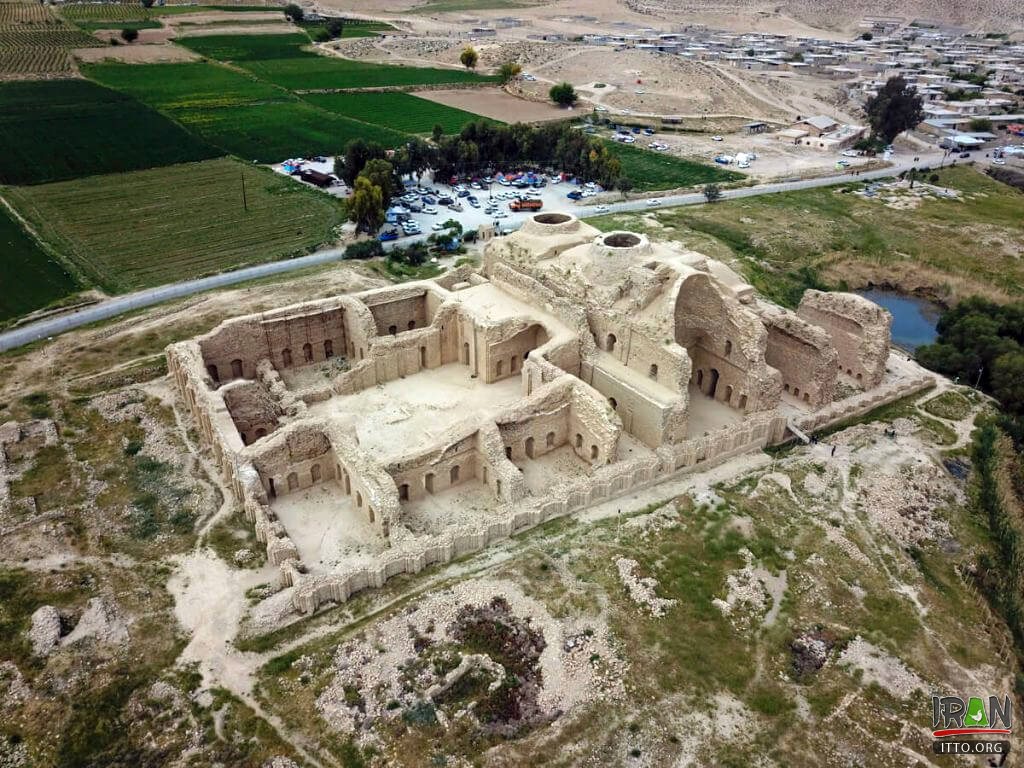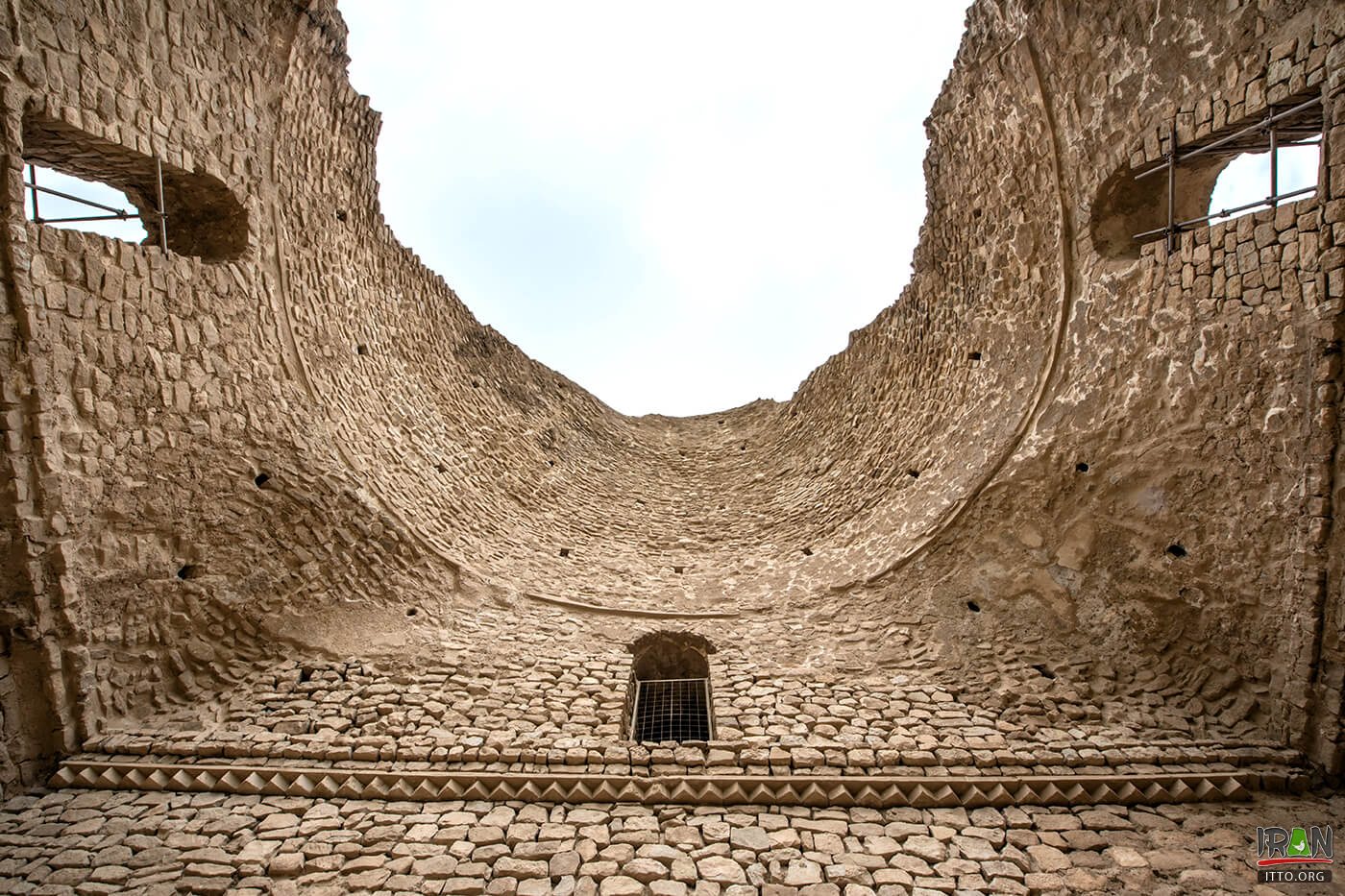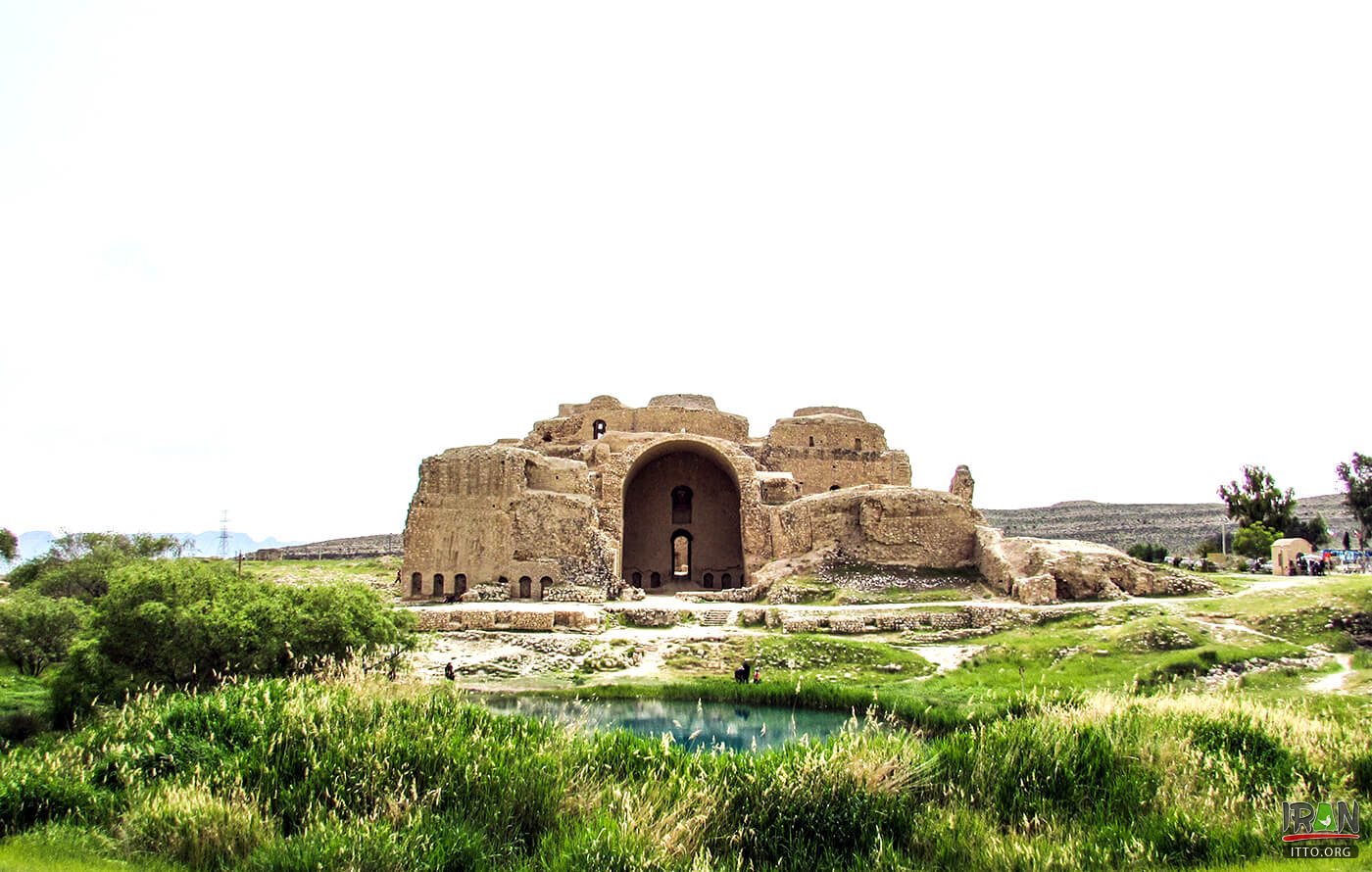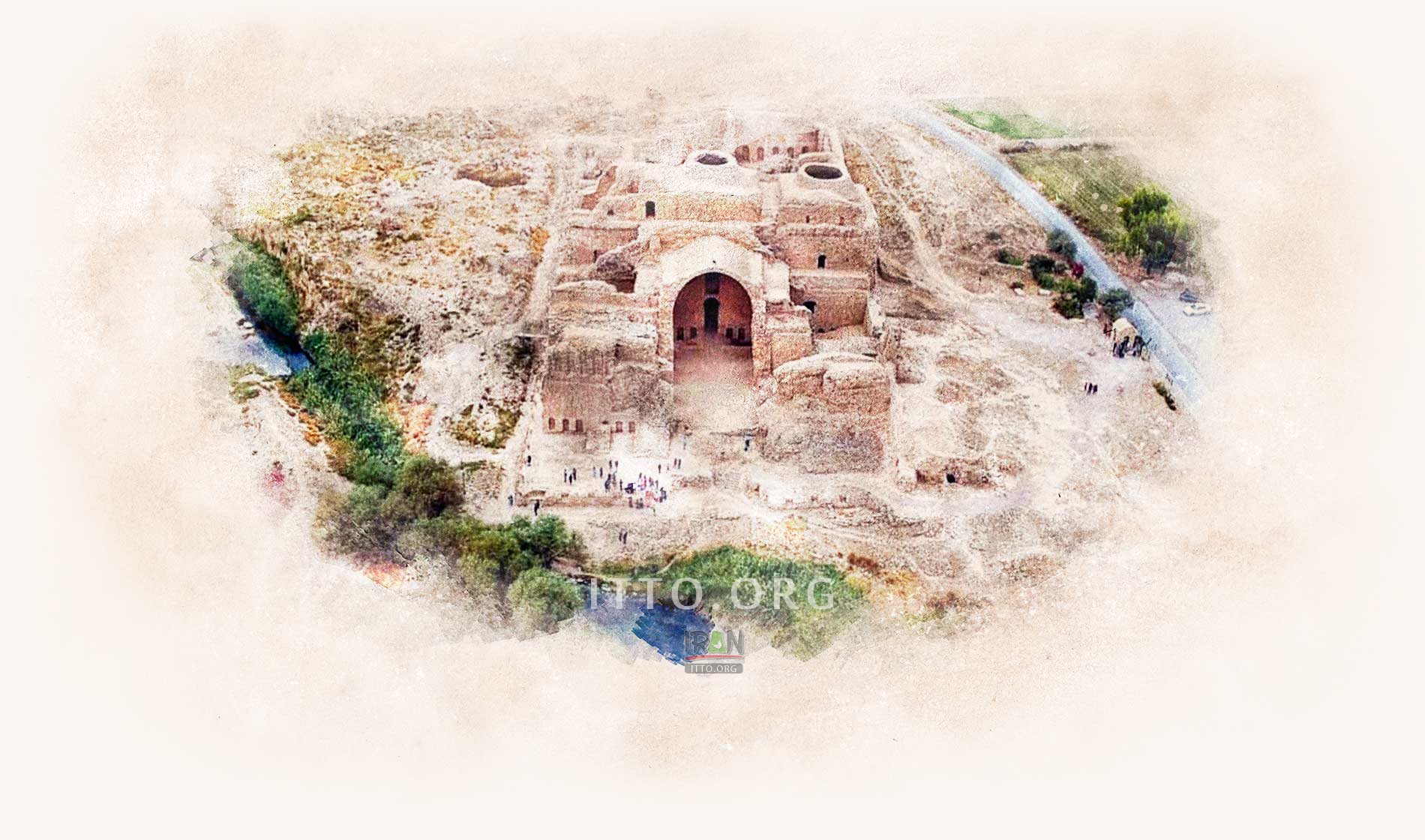The palace of king Ardashir I, the founder of the Sasanian Empire, was built opposite the city he had founded, Ardashir Khureh ("fame of Ardashir"). Although one had to cross a river, it was easy to travel from here to the town or to the nearby castle, which is called Qalah-e Dokhtar.
The ancient city where the palace is located, was renamed "Peroz" (lit. Victorious) after Ardashir established the Sassanian Empire by overthrowing Ardavan, the last Parthian king. After the Arabian conquest, Peroz was called it Firuz (Firooz), and the named remained. The modern city of Firuzabad (Firooz-Abad) is hence, of important significance in Persian history.

Ardeshir Babakan Palace (also known as Palace of Ardeshir), dating back to 1800 years ago, is the first example of dome construction in Sassanid architecture and one of the pre-Islamic Iranian architecture.
The palace consisted of several parts. In the northeast was a great arch (an iwan) that opened to a garden with a pool (a doline). This façade may have looked like the Parthian palace at Ctesiphon. Behind the northeastern iwan, you will find two - originally three - large rooms with domes, followed by a large court in the southwest, which was surrounded by many residential rooms. The entire complex was more than hundred meters long (104, to be precise) and fifty-five meters wide. The walls were decorated with stucco, which were inspired by the architecture of Persepolis.
The supporting walls are sometimes more than four meters wide, which is understandable, because there were corridors and galleries on the first floor, which make it is possible to walk around the domes. These are the oldest examples of this type of architecture in Iran. It is possible - perhaps even likely - that they were inspired by western models, and that would not be without parallel, because the representation of Ahuramazda on the nearby Second Relief of Firuzabad is also inspired by western art.
However, unlike most Roman domes of this age, the domes at the Firuzabad palace were not made of concrete but of brick. From the point of view of the history of architecture, they are more advanced than, for example, the Pantheon in Rome.

With its complicated halls and the stuccos on the upper part of the interior walls remaining from 1800 years ago, Ardeshir Palace is a unique structure. Three large dome-shaped buildings are located on the eastern side of the palace.
The palace was built next to a picturesque pond, on the bank of the western branch of Tangab River that was fed by a spring, perhaps in connection with the Persian goddess of water and growth, Anahita.
Palace of Ardeshir or Great Fire Temple?Ardeshir Babakan, the founder of the Sassanid Empire, ordered the construction of this monument in the third century. It is known with different names such as the palace of Ardeshir, Firouzabad Fire Temple, Great Fire Temple, and Barin.

On the north side of the palace, a spring has created a natural pool. In addition, the river, which runs along the eastern wall of the palace, has been a major cause of the greenery and development of the ancient city of Gur and the Sassanid palace.
For two reasons, some Iranian archaeologists believe that this monument was one of the most important Zoroastrian fire temples:
1. The present form of the monument is not structurally similar to a palace.
2. Zoroastrian religion had many followers among the people of this region then, and probably these followers used this building as a fire temple and a place for ritual ceremonies of Zoroastrianism.
According to the historical sources, the city of Firouzabad was previously famous as the city of Gur or the city of Jur. The drowning of Gur in the river’s water is said to have been one of the destructive campaigns that Alexander’s attack left in Iran. He led the river water towards the city, so the whole city went underwater and turned into a lake.
After centuries, using certain measures, Ardeshir Babakan drained the water of the lake and built a new town in the same place. For this reason, the locals called the town Ardeshir-Khwarrah. The Arabs invasion of Iran destroyed the city of Gur again. However, after the domination of the Arabs in Iran, Ezzodoleh Deylami Gilani built up the ruins and changed its name to Firouzabad.


